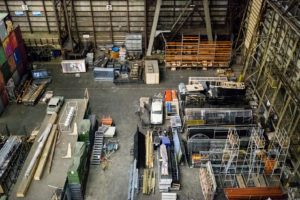How to Manage a Changing Workforce
America’s workforce is swiftly evolving into a new era. While change has always been a constant, today it is moving at an even faster pace. As a result, numerous sectors are facing new challenges with so many fluctuations across the job market. That is why it is important to consider the various factors involved in today’s transformative workforce to implement effective measures in alignment with the times.

Changes in Required Skillsets
With technology becoming more and more prevalent across many sectors, especially manufacturing, automation like robotics and the Internet of Things aren’t completely self-sufficient. They require expertise from the tech sector. However, people currently pursuing work in technology have expressed little to no interest in a fully industrial career. Coupled with the facts that pre-tech workforces are aging and many do not possess the necessary skills of advanced technologies, an employment gap is continuing to widen.
Generational Differences
Every generation has its own style of collectively perceiving what they believe to be the most efficient way of handling work responsibilities. Baby boomers lived in a fairly balanced economy, with desire for a singular ladder to climb; meanwhile, millennials are now finding themselves in a time of greater volatility that calls for extra flexibility. Therefore, bridging the gap between cross-generational employees is proving to be a challenge for some businesses.
Shifts in Demographics
America is a land that encapsulates diversity. Approximately 50% of new workers were born outside of the United States.1 In addition, a new generation of younger, U.S.-born citizens with a revised set of standards have entered the arena. This change in demographical structure is creating an impact on jobs that were once held by a stricter set.

Now, the question for business leaders to ask themselves is: What solutions can be implemented to ensure company longevity? We recommend using the following eight-step checklist as part of your action plan for success:
- Identify which employees are delivering a higher caliber of work.
- Develop a specific strategy that allows for retention of those who are exceeding standards.
- Think of ways to make all employees feel more involved and connected to the company-at-large as a means of improving their contributions.
- Retain the most valuable employees by providing extra support and rewards to the highest performers.
- Assess how changes are affecting gaps that need to be filled and create a plan of attack through research, networking, and revisions of the company structure.
- Organize new recruitments to address the situation where gaps have been identified but remain unfulfilled.
- Let go of workers who are not meeting quality standards, especially if they are not positively responding to new changes that are proving to be measurably successful.
- Reduce other unnecessary expenditures by taking advantage of cost-saving measures like work uniform rentals, project outsourcing, and investments in safety training.
Prudential Overall Supply is here to help you simplify business operations through convenient and cost-effective solutions that benefit today’s ever-evolving workforce. For more information about our textile, uniform, and supply services, contact us today (800) 767-5536.
Source